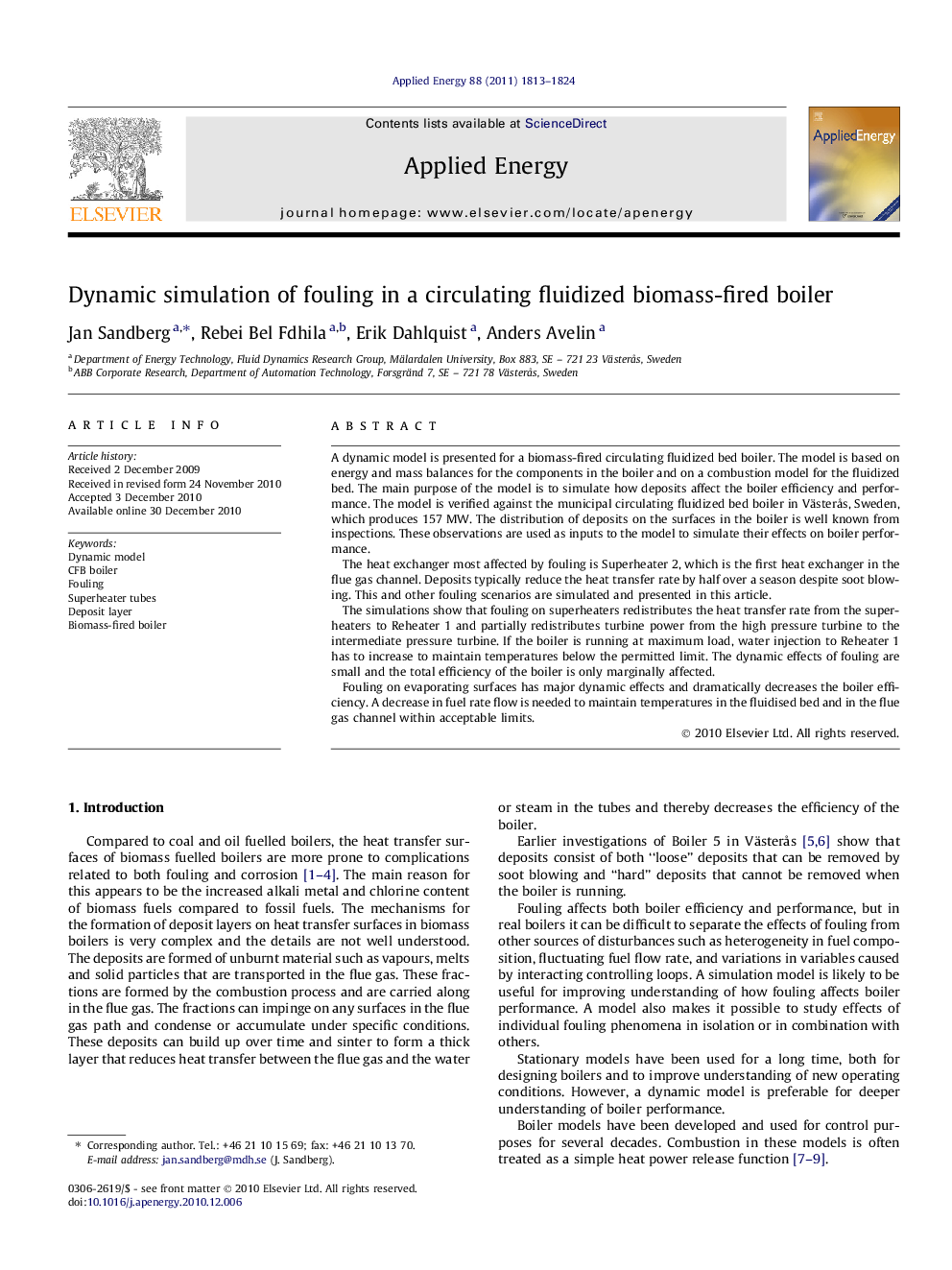| Article ID | Journal | Published Year | Pages | File Type |
|---|---|---|---|---|
| 243874 | Applied Energy | 2011 | 12 Pages |
A dynamic model is presented for a biomass-fired circulating fluidized bed boiler. The model is based on energy and mass balances for the components in the boiler and on a combustion model for the fluidized bed. The main purpose of the model is to simulate how deposits affect the boiler efficiency and performance. The model is verified against the municipal circulating fluidized bed boiler in Västerås, Sweden, which produces 157 MW. The distribution of deposits on the surfaces in the boiler is well known from inspections. These observations are used as inputs to the model to simulate their effects on boiler performance.The heat exchanger most affected by fouling is Superheater 2, which is the first heat exchanger in the flue gas channel. Deposits typically reduce the heat transfer rate by half over a season despite soot blowing. This and other fouling scenarios are simulated and presented in this article.The simulations show that fouling on superheaters redistributes the heat transfer rate from the superheaters to Reheater 1 and partially redistributes turbine power from the high pressure turbine to the intermediate pressure turbine. If the boiler is running at maximum load, water injection to Reheater 1 has to increase to maintain temperatures below the permitted limit. The dynamic effects of fouling are small and the total efficiency of the boiler is only marginally affected.Fouling on evaporating surfaces has major dynamic effects and dramatically decreases the boiler efficiency. A decrease in fuel rate flow is needed to maintain temperatures in the fluidised bed and in the flue gas channel within acceptable limits.
